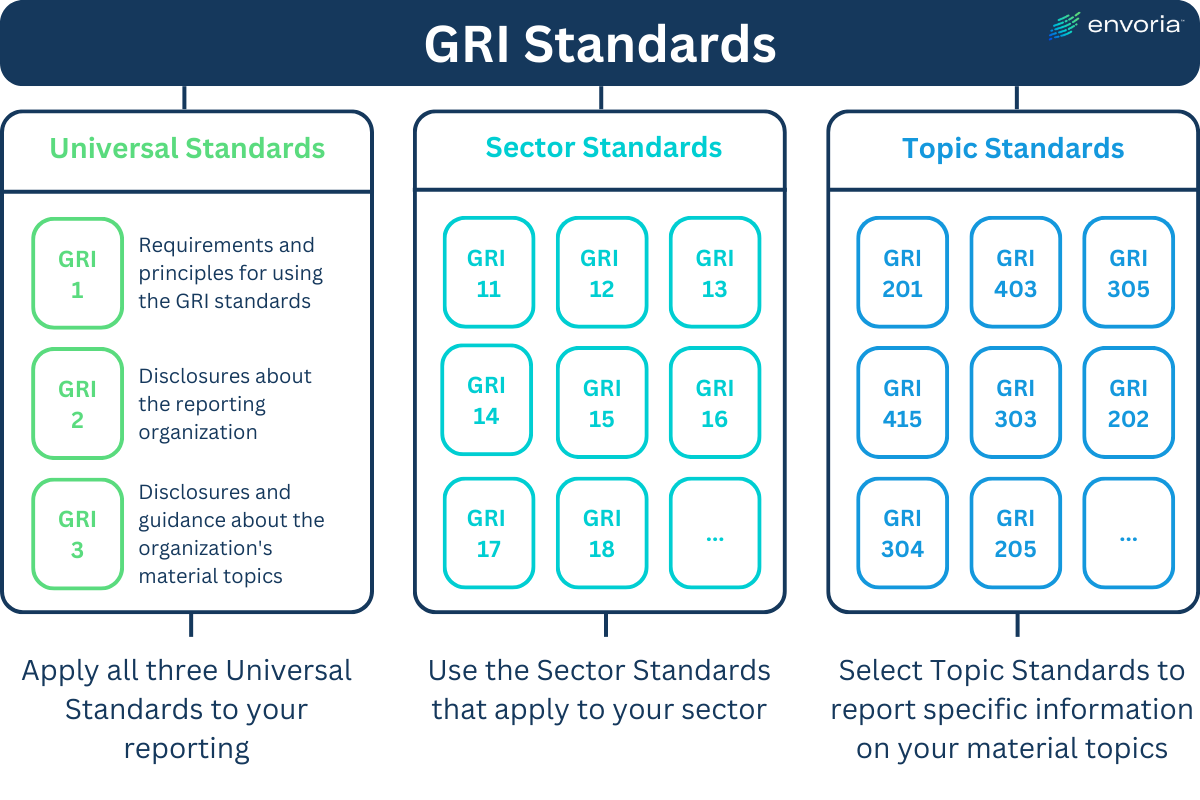The Global Reporting Initiative (GRI) is an international organization which develops guidelines for businesses, governments as well as non-governmental organizations with regard to the preparation of sustainability reports. The aim is to help stakeholders throughout their progress towards sustainable development.
Today, the GRI Standards are the most widely used global sustainability reporting framework. Since 1997, the GRI Standards have undergone several revisions and changes. The latest modification of the standards however was a more general revision with regard to the structure and terms. The GRI Standards were fully adopted on January 1, 2023, and with it, the Universal Standards 2021 became effective. From now on, all organizations reporting on GRI are now required to use these standards for publishing information.
Who do the GRI Standards apply to?
Any organization, regardless of size, industry, or location, can use the GRI Standards for its sustainability reporting. As of 2021, more than 15,000 organizations worldwide disclosed their ESG information in accordance with the GRI Standards.
From an internal view, the standards build the framework for an organization to report on its impact. The information disclosed can be used to evaluate policies, redefine strategies, or guide decisions, such as setting goals and objectives. They also serve as a credible way to compare reported data both internally and externally.
From an external view, the published standardized information can also help stakeholders such as investors to identify financial risks, assess the integration of sustainable development into corporate strategies, and evaluate the long-term success of organizations.
The GRI Standards are divided into three main areas
The GRI Standards are a modular system covering the GRI Universal Standards, the GRI Sector Standards, and the GRI Topic Standards. With the three subject areas and overall 120 indicators, the GRI promotes standardization, a crucial factor with respect to effective reporting and tangible progress towards sustainable business.

Universal Standards:
The disclosures in this area are mandatory for every organization which reports in accordance with the GRI. As the name already reveals, an organization must disclose general information about its business and material topics. These disclosures are the foundation on which the following standrads are building on.Sector Standards:
The GRI organization is developing 40 standards in total, specific to certain industries, and has already begun working out sectors with the highest impact. Since June 2022, the following sector standards are available: Oil and Gas (GRI 11), Coal (GRI 12), and Agriculture, Aquaculture and Fishing (GRI 13).Topic Standards:
The third standard has retained a similar structure to the previous GRI standards versions since it provides disclosures on specific topics, such as waste, tax, etc. When reporting, an organization must select the topic standards which correspond to their previously defined material topics (Universal Standards).
What does the future hold for the GRI Standards?
The GRI organization is still working on the 40 industry-specific Sector Standards. The next publications will include Mining (currently under development) and Financial Services (scheduled for Q2 2023). If a suitable sector standard is available, organizations are required to utilize the disclosures contained in the standard.
Beyond that, however, the question arises as to whether the GRI can sustain itself as the most widely used global reporting framework. Because with the CSRD coming into force on January 5, 2023, the ESRS were introduced as new sustainability reporting standards that will become legally binding for over 50,000 companies in the EU. Will ESRS replace the GRI as the gold standard in sustainability reporting? Learn more in our Insight article.